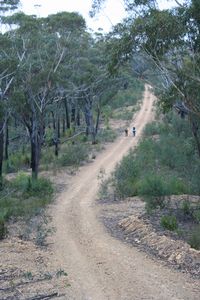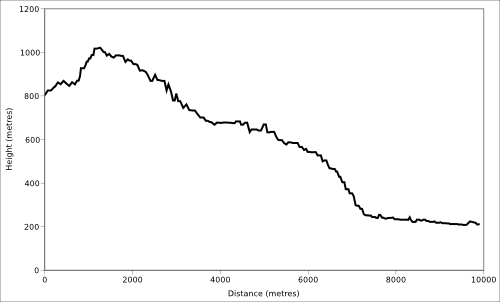Deua Hike
Way back at the start of November, Mum, Dad, Ange and I headed out for a hike. The plan was two “easy” days of 10km, starting at the Wyanbee caves, walking down to the Deua river, and then back again.
We did look at the map, but it’s fair to say we probably should have looked a bit closer at the map. From the car park we had to climb a good 100-200m vertically to get through the caves, the track no where to be found, and then 800m drop to the river. 800m drop isn’t so bad, but the 800m up on the Sunday was pretty killer.
A slight navigational error in the car, meant we didn’t start walking until about 1pm, which was a little late. That had us arriving at the camping spot just before dark, only to find that the nice patch of grassy river bank we’d eyed-off was just outside the National Park boundary, and sported a lovely “No Trespassing” sign. A little bush bashing got us to a spot just inside the park boundary, but still on the river bank, finally we could sit down.
It was a gorgeous campsite, although we were all a bit too tired to really enjoy it. It’d be a great spot to spend a few days in summer, just sitting by the river, reading books and swimming.
Sunday was the main event – the 800m of climbing took us most of the day, it was pretty hot climbing the ridge, although it could have been worse. Later in the day the wind came up and it looked like it might storm for a little while, but faded away.
Although we couldn’t find the track up through the caves, we figured on the way back we might have more luck, but no. So to end our long hot day we had a few more kms of bush bashing – with all the off-track walking we did I was suprised we didn’t meet any long slim natives.
In hindsight a great walk, just be wary of the hills!
Update: I’ve created a GoogleEarth overlay with the route of the hike.
You can view it in GoogleEarth here, or in Google maps here.And here’s a graph of elevation vs distance:
ps. Half the photos are from Ange’s camera, and half from Mum and Dad’s, so they’re out of order – all of Mum and Dad’s first, then all of Ange’s.
Posted by mike on Saturday December 23rd, 2006, tagged with hiking, outdoor, photos | comments disabled



